In 1981, Voyager 2's visit to Saturn completely changed the hunt for aliens
The hunt for habitable worlds owes a debt to this moment in planetary science history.

Forty years ago, NASA scientist Linda Spilker started sleeping at the office. It was her first job out of college, but she wasn’t camping out because she was over-worked and chained to her desk. Instead, she was waiting for an exquisite moment in human history: The first time Voyager 2 would fly by Saturn and its moons, and, critically, the images it would return to Earth of the distinctive ringed planet.
“I’d bring my sleeping bag into my office, and I’d have like a timeline of when the pictures would come back to the Earth,” she recalls for Inverse . “A lot of people did this, so you could sometimes go into somebody’s office, and you might see a pair of feet sticking out from under the desk.”
Voyager 2’s flyby wasn’t the first time a spacecraft gave scientists a close-up view of the gas giant and its moons — that privilege went to its sister spacecraft Voyager 1, which entered the Saturn system on November 12, 1980.
But the flyby, which took place on August 26, 1981, provided scientists here on Earth with important observations that, combined with those of Voyager 1, have informed every NASA mission to the Saturn system since.
“We could go in and tweak the designs and the observations for Voyager 2.”
NASA’s Cassini, Huygens, and, importantly, the upcoming Dragonfly mission to Saturn’s moon Titan to search for signs of life all owe a debt to this moment in history.
What Voyager 2 discovered around Saturn — When Spilker graduated with a bachelor’s degree in physics and went to work for NASA in 1977, they gave her a choice of missions., including a brand new mission set to launch that year — Voyager.
“When they told me that Voyager was headed to Jupiter and Saturn, and possibly onto Uranus, and Neptune, I said, ‘Sign me up,’” she says.
Spilker watched Voyager 2 launch in August of 1977 and then settled into her role on the science team for both space probes until they reached the Saturn system. Voyager 1 made it on November 12, 1980, and just a little shy of one year later, Voyager 2 entered the Saturn system on August 26, 1981.
“The first flyby was unique in that we found so many interesting new things. We got to see the detailed structure, for instance, in Saturn’s rings,” Spilker says. With these data in hand, the scientists on the ground could plan for the next flyby — and what they wanted to find.
“We could go in and tweak the designs and the observations for Voyager 2,” Spilker says.
Voyager 2 took a closer look at Saturn’s rings, particularly the narrow, outermost “F” ring.
“We saw a lot of changes in that ring, in particular, these sorts of kinks and braids that we could see in that ring,” Spilker says.
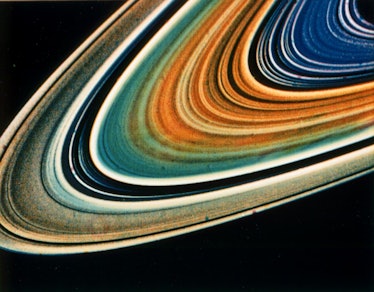
Saturn’s rings as imaged by Voyager 2.
Voyager 2 revealed that Saturn’s rings are anything but “bland sheets of material,” but rather intricate, detailed, and dynamic structures. Spilker would later use Voyager 2’s stellar and radio occultation data — measurements of how starlight and radio waves were influenced by the rings while passing through them — to complete her Ph.D. in geophysics and space physics.
“The way the waves damp out tell you something about the surface mass density and about the densities of particles,” she says.
“We saw evidence of tectonic fractures, softened craters.”
“I was always a big fan of the rings after having used so much ring data for my thesis.”
Identifying habitable worlds — Less visually beautiful, but perhaps more intellectually curious, were the observations collected by Voyager 2 of two of Saturn’s moons, Titan and Enceladus. These data would inform both later NASA missions and the scientific search for alien life.
Enceladus is now known to harbor a global liquid water ocean beneath its icy crust, making it a prime candidate target to search for extraterrestrial life. But before the Voyager craft made it to Saturn, scientists were not even sure the small, 500-kilometer diameter world was geologically active — a key ingredient for life.
“What was really astonishing was to see Enceladus and just how bright and pristine this world looked,” Spilker says.
“We saw evidence of tectonic fractures, softened craters,” she recalls.
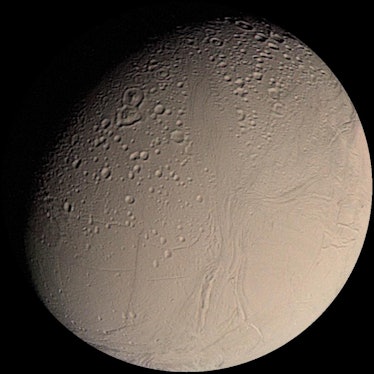
Saturn’s moon Enceladus as captured by Voyager 2.
NASA’s 2005 Cassini mission conducted multiple flybys of the little moon and took images of geysers erupting from Enceladus’s southern polar region. Cassini even flew through the geysers’ plumes, sampling what is believed to be water spewing up from the subsurface ocean.
Meanwhile, the surface of Saturn’s largest moon, Titan, remained obscured by haze during the Voyager missions. But the data Voyager 1 and 2 collected was then used to better equip the Cassini spacecraft and the Huygens lander , which separated from Cassini to land on Titan on January 14, 2005.
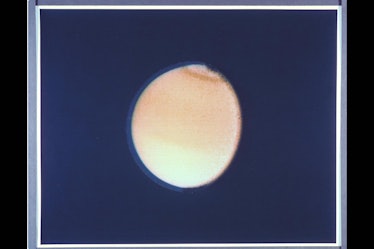
Saturn’s largest moon Titan as imaged by Voyager 2.
Together, they revealed a world of hydrocarbon lakes and water ice. Titan, scientists confirmed, was another intriguing candidate for hosting extraterrestrial life.
“All the things we learned with Voyager informed us and helped us build the Huygens probe,” Spilker says. She would know, as she joined the Cassini team in 1988.
“Had we not had that information from Voyager, it might have been much harder to put together.”
How Voyager 2 still influences NASA missions to Saturn — Voyager to Cassini and Huygens — each science mission informs the next, according to Planetary Scientist Elizabeth Turtle . Turtle is the primary investigator on the upcoming Dragonfly mission to Titan set to launch in the mid-2030s.
“Titan has been doing prebiotic chemistry experiments for us.”
“Each mission provides information that is the basis for future missions,” she says. “But each mission also raises questions, and those become the questions the next missions try to tackle.”
One of the big mysteries about Titan following the Voyager mission’s flyby was what lay on the moon’s surface. Cassini and Huygens answered that question, making observations that revealed a dense atmosphere rich in complex carbon molecules and a surface made of water ice. Turtle says these could include the ingredients necessary for the chemical reactions that could lead to the genesis of life.
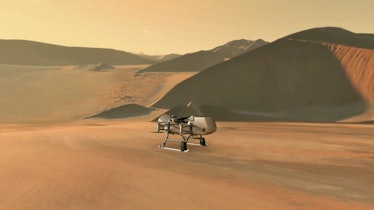
Dragonfly on Titan, as imagined by an artist.
Now it’s Dragonfly’s turn to answer the follow-up question as to whether or not those ingredients are indicative of signs of life on Titan.
An octocopter drone, Dragonfly will fly from place to place to sample the surface of Titan.
“Titan has been doing prebiotic chemistry experiments for us,” Turtle says. “What dragonfly is designed to do is to get there and pick up the results of those experiments and tell us whether there are biologically relevant compounds on the surface of Titan.”
How Voyager 2 keeps on keeping on — As for Voyager and Spilker, they have both left planetary science far behind. Earlier this year, Spilker rejoined the Voyager 2 mission as its deputy project scientist. Only now, instead of studying Saturn's rings, she’s studying the interstellar medium 150 astronomical units from the Sun: Voyager 2 officially left the Solar System on November 5, 2018.
“I think the goal is to keep taking as much science data for as long as we can,” Spilker says of the Voyager 2 spacecraft, which is now in its 44th year of operations.
“It’s gonna be a long time until we ever get another mission as far from the Sun as Voyager.”
Spilker recalls a statement made by Richard Laeser, then the Voyager project manager, after the Saturn flyby. “Voyager is in its post-retirement years,” Laeser said, and “is very healthy for its age.”
“I just had to chuckle,” Spilker says, “Because that was in 1985, and here we are in 2021, and the Voyagers — both of them are still going strong.”
- Space Science

35 Years On, Voyager's Legacy Continues at Saturn

NASA's Voyager 2 spacecraft made its closest approach to Saturn 35 years ago. The Cassini mission has followed up on many of Voyager's discoveries.
Saturn, with its alluring rings and numerous moons, has long fascinated stargazers and scientists. After an initial flyby of Pioneer 11 in 1979, humanity got a second, much closer look at this complex planetary system in the early 1980s through the eyes of NASA's twin Voyager spacecraft.
Voyager 2 made its closest approach to Saturn 35 years ago -- on Aug. 25, 1981. What the Voyagers revealed at the planet was so phenomenal that, just one year later, a joint American and European working group began discussing a mission that would carry on Voyager's legacy at Saturn. That mission -- named Cassini -- has been studying the Saturn system since 2004. Cassini has followed up on many of Voyager's discoveries, and has deepened our understanding of what some might call a "mini solar system."
"Saturn, like all of the planets the Voyagers visited, was full of exciting discoveries and surprises," said Ed Stone, Voyager project scientist at Caltech in Pasadena, California. "By giving us unprecedented views of the Saturn system, Voyager gave us plenty of reasons to go back for a closer look."
Many Mysterious Moons
Voyager's Saturn flybys provided a thrilling look at the planet's moons -- a diverse menagerie of worlds, each with unique character and charm. Voyager's images transformed the moons from points of light to fully realized places. Dramatic landscapes on Tethys, Dione, Rhea, Iapetus and other moons tantalized scientists with features hinting at tortured pasts.
"The stars of the Saturn system are the moons, which surprised all of us on both the Voyager and Cassini missions," said Linda Spilker, project scientist for Cassini at NASA's Jet Propulsion Laboratory, Pasadena. Spilker also served on the Voyager science team.
One of the key findings of the Voyagers' visits to Saturn was that the planet's moons had evidence of past geological activity and that Enceladus -- the brightest, most reflective planetary body scientists had ever seen -- could still be active.
Cassini set out to delve deeper into the nature of these moons, and found that, indeed, icy Enceladus has geysers erupting to this day. Cassini also confirmed that Enceladus is the source of Saturn's E ring, which was suggested by Voyager. But while Voyager images of wispy terrain hinted at ice volcanoes on Dione, Cassini found this feathery coating was actually a system of bright canyons.
...Especially Titan
Titan, Saturn's largest moon, was a high-priority target for the Voyager mission. Gerard Kuiper, for whom the Kuiper Belt is named, had discovered in 1944 that Titan had an atmosphere containing methane. Observations from both Voyagers showed that Titan's atmosphere was primarily composed of nitrogen, with a few percent methane and smaller amounts of other complex hydrocarbons, such as ethane, propane and acetylene. No other moon in the solar system has a dense atmosphere.
Mission planners mapped out a path through the Saturn system that provided the gravitational boost needed to send Voyager 2 onward to Uranus . But because of intense interest in Titan's atmosphere, the giant moon was the higher priority. In fact, the team would have directed Voyager 2 much closer to Titan if Voyager 1 had not been successful in observing it.
"To fly close to Titan, Voyager 2 would have swung upward out of the plane of the planets, and couldn't have gone on to visit any others," Stone said. "It was fortunate that Voyager 1's observations of Titan went flawlessly, so that Voyager 2 could continue traveling to Uranus and Neptune."
To the Voyagers, Titan appeared as a featureless orange ball because of dense haze in its atmosphere. Seeing through this haze was a chief goal of the Cassini mission. Cassini carried cameras with infrared vision that could see through the haze, a radar that could map the surface in detail, and the European Huygens probe, which landed on the moon's frigid surface on Jan. 14, 2005. We now know, thanks to Cassini, that smoggy Titan has methane lakes and flooded canyons .
New Shapes and Sizes
Voyager discovered four new moons and sharpened our view of some that were previously known. The spacecraft also revealed how the gravitational pull of these satellites causes ripples in Saturn's rings, much like the wake of a ship on the sea. There were also surprising gaps in the rings, some caused by moons embedded within them.
Voyager also revealed an immense hexagonal feature in the clouds that surrounded Saturn's north pole, which Cassini found was still going strong a quarter century later. Additionally, Voyager measured the wind speeds, temperature and density of Saturn's atmosphere. With Voyager's measurements as a starting point, Cassini further explored how Saturn's atmosphere changes with the seasons.
Lingering Mysteries of Saturn and Beyond
While both missions have vastly improved our understanding of Saturn, its rings and moons, there are still mysteries galore. For example, the exact length of Saturn's day continues to elude researchers. The Voyagers measured it to be a period of 10.66 hours, but Cassini has measured two different, changing periods in the north and south.
Voyager also made the first up-close observations of Saturn's rings, discovering new thin and faint rings, along with the ghostly features called spokes. But despite more than a decade of observations with Cassini, scientists are still unsure about the age of the rings -- they could be hundreds of millions of years old, or several billion. Cassini, in turn, has prompted new questions of its own, such as whether the ocean worlds Enceladus and Titan could be habitable.
"The twin Voyagers rewrote the textbooks on Saturn, its rings and moons, and we couldn't wait to go back with Cassini," Spilker said. "New mysteries uncovered by Cassini will await the next missions to follow in the footsteps of Voyager."
Voyager 2's mission of discovery continues to this day. It is now part of the Heliophysics System Observatory, a collection of missions that explore our space environment, and which contribute to protecting future missions on their journeys. Voyager now explores what's known as the interstellar boundary region, where material blowing out from the sun encounters similar winds from other stars.
The two Voyager spacecraft, as well as Cassini, were built by JPL, which continues to operate the three missions. JPL is a division of Caltech. For more information about the Voyager spacecraft, visit:
http://www.nasa.gov/voyager
http://voyager.jpl.nasa.gov
News Media Contact
Elizabeth Landau
Headquarters, Washington
202-358-0845
Thirty-four years after launch, Voyager 2 continues to explore

On August 20, 1977, the intrepid spacecraft Voyager 2 launched from the Cape Canaveral Air Force Station, FL on what was supposed to be only a four year mission to Jupiter and Saturn. But exactly 34 years later, Voyager 2 has cemented itself into the upper echelons of unmanned space exploration, continuing to beam back data as it searches for the barrier between our solar system and interstellar space.
Launch and the cruise to Jupiter:
Despite being designated as the second probe in the Voyager family, Voyager 2 received the honor of being the first Voyager probe launched into space on what was – at the time – supposed to be an extremely truncated “grand tour” mission (only visiting Jupiter and Saturn and none of the remaining outer planets).
However, all was not smooth sailing for Voyager 2. Shortly after the spacecraft’s escape from Earth orbit, Voyager 2’s science instrument boom did not fully deploy, though it was very close to the fully deployed position and nonetheless functioned properly.
After recovering from this early-mission issue, Voyager 2 continued its outward trek toward Jupiter and entered the asteroid belt on December 10, 1977. Nine days later, Voyager 2 was overtaken by sister probe Voyager 1 which, despite being launched two weeks after Voyager 2, was launched at a higher velocity.
In April 1978, due to a ground error resulting in the failure to send expected commands to Voyager 2, the spacecraft’s fault-protection software assumed the primary radio receiver had failed and switched to the backup receiver.

When controllers commanded Voyager 2 to resume using the primary receiver, the primary receiver failed completely, resulting in a week of waiting for the fault-protection software to again command use of the degraded backup receiver.
Controllers ultimately learned to compensate for the limitations of the backup receiver.
After 10 months in the asteroid belt, Voyager 2 exited the belt on October 21, 1978.
A complete pre-launch history and development of the Voyager Program can be found here: http://www.nasaspaceflight.com/2011/08/voyagers-unprecedented-on-going-mission-exploration/
An encounter with Jupiter:
On April 25, 1979, less than two years after its launch, Voyager 2 began observations of the Jovian system.
During the four months of scientific investigations, Voyager 2 made several significant discoveries, not the least of which was the discovery of three previously-unknown moons.

Furthermore, Voyager 2 collected data on Europa’s intersecting linear features. During the Voyager 1 flyby of Europa early in 1979, scientists discovered the linear markings and hypothesized that they were caused by tectonic forces or “crustal rifting.”
A plan was devised to collect higher resolution images of the features with Voyager 2. When these images were transmitted back to Earth, scientists were shocked to discover that the features lacked almost any topographic relief – furthering the mystery surrounding Europa.
In all, Voyager 2’s data – correlated with data from Voyager 1 – allowed scientists to understand that Europa is in fact internally active because of tidal heating in its gravitational tug of war with Jupiter.
Based on Voyager 2 data, Europa was also believed to have a thin layer of water ice floating on a subterranean ocean about 30 miles below the moon’s surface.
On July 9, 1979, Voyager 2 made its closest approach to Jupiter at 18:29.00 EDT, coming within 570,000 km of the largest planet in our solar system.

Voyager 2 also discovered several smaller storms in Jupiter’s upper atmosphere as well as eddies in the planet’s bands.
However, the most-significant discovery came not at Jupiter but at its well-known moon Io.
During its pass through the Jovian system, Voyager 2 helped with the discovery of active volcanism on Io. The discovery marked the first time that volcanism was observed on a celestial body other than the Earth and the first time the evidence was gathered about recent (within months) volcanic activity on a planetary body other than Earth.
Moreover, Voyager 2’s encounter with Jupiter was precisely planned to use Jupiter for a gravity/velocity assist maneuver to fling Voyager 2 onto the proper course heading for an encounter with Saturn.
The gravity assist boosted Voyager 2’s outward velocity to “solar system escape velocity” levels, forever placing Voyager 2 on a course out of the solar system.
Voyager 2 made its last observation of Jupiter on August 5, 1979.
A short hop to Saturn:
Two years after completing operations at Jupiter, Voyager 2 arrived at the Saturnian system, with continuous observations of the system beginning on June 5, 1981.

The closest approach to any object in the Saturnian system by Voyager 2 was its flyby of the moon Enceladus at just 87,010 km.
During the probe’s flyby of Saturn, Voyager 2 was guided on a specific course to allow it to probe Saturn’s upper atmosphere via radio link.
These observations allowed scientists to determine that Saturn’s upper atmospheric temperature was -203 degrees C at a mean pressure level of seven kilopascals and -130 degrees C at a mean pressure level of 120 kilopascals.

Voyager 2 made its closest approach to Saturn on August 25, 1981 (exactly 4 years five days after launch) at 23:24.05 EDT (0324.05 UTC 26 August 1981) at a distance of 161,000 km.
This flyby was specifically designed to do something no other space probe had attempted before, use Saturn for a gravity assist maneuver to alter Voyager 2’s course for a close encounter with yet another planet: Uranus.
While initially not at all a part of the Voyager missions up the crafts’ launches, NASA decided to take advantage of the health of the spacecraft and the rare planetary alignment of the gas and ice giant planets to send Voyager 2 off to visit Uranus.
This was made possible solely because of the earlier successful close flyby of Saturn’s moon Titan by the Voyager 1 probe. Titan was a crucial mission objective of the Voyager Program, and the success of the Voyager 1 flyby allowed NASA to alter Voyager 2’s trajectory to ensure the proper encounter with Saturn’s gravitational field for a course alteration to Uranus.
The final observation of the Saturnian system was made on September 25, 1981.
However, shortly after concluding operations at Saturn, Voyager 2’s science scan platform seized, and its gear and shaft were damaged because of the apparent migration of lubricant away from the gear-shaft interface due to overuse in a short amount of time.
Between Voyager 2’s encounter with Saturn in 1981 and Uranus in 1986, controllers developed a technique called “image motion compensation.” This involved moving the scan platform at slow rates, which was found to be possible despite the damage, in conjunction with thruster firings to rotate the entire spacecraft at a rate that would allow a target to be tracked long enough for imaging.
This technique was designed to reduce smearing of the lubricant during the long photographic and sensor exposures required at Uranus, where the sunlight would be nearly 400 times dimmer than at Earth.
The sharp images that would later be obtained of Uranus’ moon Miranda and Neptune’s moon Triton proved the success of the Voyager team’s efforts.
Encounter with Uranus’ chaotic system:
Truly going for the first of two times where no man-made object had (or today, has) gone before, Voyager 2 began its encounter with the Uranian system on November 4, 1985.

With an axial tilt of 97.77 degrees, Uranus has, by far, the largest axial tilt of any planet in the solar system; additionally, Uranus’ odd axial tilt was measured by Voyager 2 to have an odd effect on the planet’s magnetic field – a field that was discovered by Voyager 2.
Measurements from Voyager 2 found that Uranus’ magnetic field was comparable in intensity to that of Earth’s. Moreover, there were found to be large variations in the field given its significant offset of 60 degrees from the planet’s axis of rotation.
Basically, Uranus’ magnetic field does not emanate from the planet’s poles like Earth’s magnetic field does; it emanates from a location 60 degrees from the poles and 30 degrees from the planet’s equator.

This has led to the hypothesis that Uranus’ magnetic field is generated at some depth within Uranus where water molecules, under specific high pressure, become electrically conducting.
Moreover, a surprising find was that, despite the axial tilt throwing one pole into total sunlight for half a Uranian year and the other pole into complete darkness for half an orbit, the temperature’s throughout the planet’s cloud tops were relatively equal.
Voyager 2 was also able to determine that Uranus’ “day” was comparable to that of Saturn and Jupiter at 17 hours 14minutes.
Voyager 2 also took specific measurements of Uranus’ composition, confirming that it differed greatly in chemical composition from Jupiter and Saturn.
This confirmation of Uranus’ composition (the gases hydrogen, helium, methane, hydrogen deuteride, and the ices ammonia, water, ammonium hydrosulfide, and methane) has led a growing number of scientists to refer to Uranus as the first of two Ice Giants (Neptune being the second).
Voyager 2 further measured Uranus’ radiation belts, which were found to have a similar intensity as those of Saturn.

These observations have led scientists to hypothesize the Miranda was actually torn apart from either gravitational forces or a planetary collision at one point in time and then reaggregated into its present form.
A further detailed studied of remaining moons showed a wide difference in apparent surface feature age.
Likewise, Uranus’ rings were found to be extremely young and unlike those of Jupiter and Saturn. A study of Uranus’ rings by Voyager 2 revealed that the rings are most likely the remnants of moons that collided with one another in the chaotic orbital environment around Uranus and were not formed at the same time as Uranus.
During its observations of Uranus, Voyager 2 also discovered two previous-unknown rings.
Voyager 2’s closest encounter with Uranus occurred on January 24, 1986 at 12:59.47 EST at a distance of 81,500 km.
The closest approach of Voyager 2 to any object in the Uranian system occurred on 24 January 1986 at 10:50.00 EST when the probe passed within 29,000 km of Miranda.
With the amazing continued good health of Voyager 2, NASA decided that it could not pass up the rare planetary alignment to send Voyager 2 to yet another planet: Neptune.
On to Neptune – disproving “Planet X”:
Approaching the Neptunian system, Voyager 2 began observations of the farthest planet of our solar system on June 5, 1989 – exactly eight years after it began observations of the Saturnian system.

During its flyby of Neptune, Voyager 2 discovered an anticyclone, dubbed the Great Dark Spot (which has since disappeared). This has led to the theory that the Great Dark Spot was actually a hole in the cloud deck of Neptune and not a storm like Jupiter’s Great Red Spot.
Voyager 2 also confirmed that Neptune is comprised primarily of hydrogen, helium, and methane – like Uranus – and is thus sometimes (and increasingly) classified as an Ice Giant instead of a gas giant like Jupiter and Saturn.
But most importantly, Voyager 2’s pass through the Neptunian system allowed for the first accurate measurement of the planet’s mass, which was found to be 0.5 percent less than previously calculated.
This error in mass, equivalent to the mass of Mars, was enough to disprove the theory of another planet somewhere in the vicinity acting upon Neptune and Uranus’ orbits.

The accidental discovery of Pluto during the search for Planet X ultimately proved more frustrating than helpful as Pluto was found to have a significantly low mass that did not account for the observed orbital perturbations of Uranus and Neptune.
However, using Voyager 2’s information, the mass of Neptune was recalculated downward and new orbital predictions were run. The lower mass accounted for the skewed orbital predictions of Uranus and Neptune, and the Planet X theory was largely discarded.
But Voyager 2 still had one more task to perform: a flyby of Neptune’s moon Triton.

The flyby was extremely successful and sent Voyager 2 sailing away from any other planetary body in the solar system.
Years later, with the reclassification of Pluto in 2006 out of the planet category, Neptune officially became the last planet in our solar system. Thus, in a de facto state, Voyager 2 became the only probe to complete the “Grand Tour” proposal to visit all of the outer planets in one mission.
Further, the reclassification of Pluto meant that all of the planets in the solar system had now been visited and studied by at least one probe – with Voyager 2 completing the overall one visit per planet study with the flyby of Neptune in 1989.
With the conclusion of Neptunian observations on October 2, 1989, Voyager 2’s primary mission ended officially on December 31, 1989.
From Neptune to the outer edges of the solar system:
Following its encounter with Neptune, Voyager 2 was flung out of the ecliptic plane of the solar system at a -55 degree declination. Thus, Voyager 2 was placed on a permanent course out of the solar system in the “southern” portion of the heliosphere – the sphere of direct influence of the sun’s solar wind over the interstellar medium (the hydrogen and helium that permeates the galaxy).

Specifically, for both Voyager 2 and its sister spacecraft Voyager 1, NASA developed a new mission of the Voyagers: find and explore the barrier between the solar system and interstellar space.
To this end, Voyager 2 reached the first part of this barrier on August 30, 2007 when it crossed the Termination Shock – a standing shock wave and the immediate area where the solar wind dramatically and suddenly drops from supersonic to subsonic speed in relation to the sun.
Crossing the Termination Shock at a distance of 76 AU (Astronomical Unit – 1 AU equals the average distance between the Earth and the sun) revealed that the heliosphere is not a perfect bubble and behaves quite different in the “southern” region than it does in the “northern” region where Voyager 1 is escaping the solar system.
Passing through the Termination Shock brought Voyager 2 into the heliosheath – the area within the heliosphere where the solar wind is slowed and made turbulent by the interstellar medium.

Voyager 2 is currently in the heliosheath travelling outward at a velocity of 15.464km/s and is 14,285,000,000 km away from Earth (of 95.49 AU from Earth).
It is the second farthest man-made object from Earth, behind only its sister Voyager 1. It is twice as far from the sun as Pluto but not quite beyond the orbital distance of the dwarf planet Eris.
Voyager 2 is currently expected to reach the heliopause – the area in the heliosphere where the solar wind is stopped completely by the force of the interstellar medium in 2015.
However, recent observations of the interstellar boundary by the IBEX spacecraft have resulted in a recalculation downward of the length of the heliosheath and distance to the heliopause.
Thus, Voyager 2 could reach the heliopause before 2015.
Beyond the Heliopause – the Voyager Interstellar Mission:
Once Voyager 2 passes through the heliopause, the only remaining event will be to actually cross the barrier and officially exit the solar system – a continuation of Voyager 2’s current Voyager Interstellar Mission (VIM).

To this very day, all Voyager 2 data beamed back to Earth is done in real-time at a rate of 160 bits per second due to efforts to conserve power on the spacecraft.
To manage the dwindling power reserves and communications so as to maintain science data return as long as possible, with as limited support staff as possible, the Voyager team has developed a “thirty year plan” to operate the spacecraft and gradually power down non-essential systems.
The control strategy for the VIM is to store a sequence of repeating commands managing the health and safety of the spacecraft, as well as basic data acquisition and transmission.
The “baseline sequence” is stored in the CCS memory and manages the science instruments and communications functions using 11 pre-loaded “block routines” that accomplish tasks such as the recording and playing back of data and gyro and antenna operations.

A “Backup Mission Load,” a sequence of commands to allow the spacecraft to operate autonomously should the ability to receive data from Earth be lost, has also been sent to the spacecraft. The spacecraft now have information onboard to automatically keep the antennae pointed at Earth through the 2017-2020 timeframe.
Most importantly, though, a key part of the thirty year plan is to manage the gradual shutdown of systems that are the least essential to the continued gathering of particle and field data called for by the VIM.
The exact order and times of the shutdowns of the remaining instruments have not yet been determined, but a rough schedule is has been developed.
If commanding from Earth is still possible beyond gyro shutdown, the remaining science instruments will be powered down in a to-be-determined order beginning around 2020.
At that time, communications will still be possible, and sufficient hydrazine is available for almost 50 years at the current rate of consumption.
Should command ability be lost, the Backup Mission Load will activate and take the following steps to reduce power consumption and configure the spacecraft for the VIM: the scan platforms and all the instruments on them will be powered down; initialize the Low Energy Charged Particle instrument for data gathering; initialize the Cosmic Ray experiment for data gathering;
Furthermore, the Backup Mission Load will configure the communications transmitter system power, configure the thrusters to a redundant configuration, and terminate gyroscope and tape recorder use on predetermined dates.
(Images via NASA JPL, NASA, NASA APOD, L2 Historical)
ISS Managers Conduct Expedition 29 FRR, Prepare Station for Post-Shuttle Ops
Desert rats: field tests simulating neo and mars missions, related articles, delta iv heavy launches on final mission, launch roundup: delta iv swan song, angara test..., spacex debuts new bandwagon rideshare service, ahead of total solar eclipse, scientists use spacecraft..., spacex begins 2024 with several record-breaking feats, booster 11 conducts engine testing as starbase continues..., nasa, lockheed martin working to resolve artemis ii..., launch roundup: spacex continues high cadence, event horizon telescope reveals magnetic fields around the..., china roundup: chinese moon plans, commercial company updates,....

- The Contents
- The Making of
- Where Are They Now
- Frequently Asked Questions
- Q & A with Ed Stone
golden record
Where are they now.
- frequently asked questions
- Q&A with Ed Stone
News | August 24, 2016
35 years on, voyager's legacy continues at saturn.
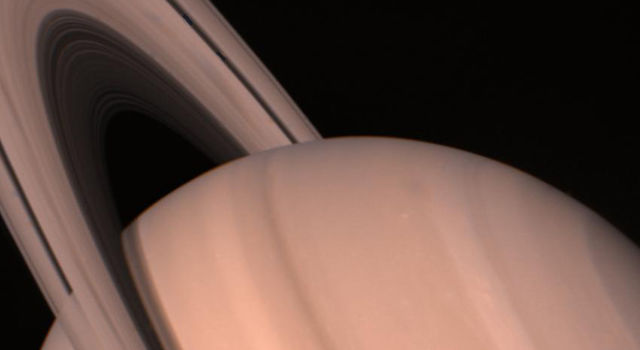
Saturn, with its alluring rings and numerous moons, has long fascinated stargazers and scientists. After an initial flyby of Pioneer 11 in 1979, humanity got a second, much closer look at this complex planetary system in the early 1980s through the eyes of NASA's twin Voyager spacecraft.
Voyager 2 made its closest approach to Saturn 35 years ago -- on Aug. 25, 1981. What the Voyagers revealed at the planet was so phenomenal that, just one year later, a joint American and European working group began discussing a mission that would carry on Voyager's legacy at Saturn. That mission -- named Cassini -- has been studying the Saturn system since 2004. Cassini has followed up on many of Voyager's discoveries, and has deepened our understanding of what some might call a "mini solar system."
"Saturn, like all of the planets the Voyagers visited, was full of exciting discoveries and surprises," said Ed Stone, Voyager project scientist at Caltech in Pasadena, California. "By giving us unprecedented views of the Saturn system, Voyager gave us plenty of reasons to go back for a closer look."
Many Mysterious Moons
Voyager's Saturn flybys provided a thrilling look at the planet's moons -- a diverse menagerie of worlds, each with unique character and charm. Voyager's images transformed the moons from points of light to fully realized places. Dramatic landscapes on Tethys, Dione, Rhea, Iapetus and other moons tantalized scientists with features hinting at tortured pasts.
"The stars of the Saturn system are the moons, which surprised all of us on both the Voyager and Cassini missions," said Linda Spilker, project scientist for Cassini at NASA's Jet Propulsion Laboratory, Pasadena. Spilker also served on the Voyager science team.
One of the key findings of the Voyagers' visits to Saturn was that the planet's moons had evidence of past geological activity and that Enceladus -- the brightest, most reflective planetary body scientists had ever seen -- could still be active.
Cassini set out to delve deeper into the nature of these moons, and found that, indeed, icy Enceladus has geysers erupting to this day. Cassini also confirmed that Enceladus is the source of Saturn's E ring, which was suggested by Voyager. But while Voyager images of wispy terrain hinted at ice volcanoes on Dione, Cassini found this feathery coating was actually a system of bright canyons.
...Especially Titan
Titan, Saturn's largest moon, was a high-priority target for the Voyager mission. Gerard Kuiper, for whom the Kuiper Belt is named, had discovered in 1944 that Titan had an atmosphere containing methane. Observations from both Voyagers showed that Titan's atmosphere was primarily composed of nitrogen, with a few percent methane and smaller amounts of other complex hydrocarbons, such as ethane, propane and acetylene. No other moon in the solar system has a dense atmosphere.
Mission planners mapped out a path through the Saturn system that provided the gravitational boost needed to send Voyager 2 onward to Uranus . But because of intense interest in Titan's atmosphere, the giant moon was the higher priority. In fact, the team would have directed Voyager 2 much closer to Titan if Voyager 1 had not been successful in observing it.
"To fly close to Titan, Voyager 2 would have swung upward out of the plane of the planets, and couldn't have gone on to visit any others," Stone said. "It was fortunate that Voyager 1's observations of Titan went flawlessly, so that Voyager 2 could continue traveling to Uranus and Neptune."
To the Voyagers, Titan appeared as a featureless orange ball because of dense haze in its atmosphere. Seeing through this haze was a chief goal of the Cassini mission. Cassini carried cameras with infrared vision that could see through the haze, a radar that could map the surface in detail, and the European Huygens probe, which landed on the moon's frigid surface on Jan. 14, 2005. We now know, thanks to Cassini, that smoggy Titan has methane lakes and flooded canyons .
New Shapes and Sizes
Voyager discovered four new moons and sharpened our view of some that were previously known. The spacecraft also revealed how the gravitational pull of these satellites causes ripples in Saturn's rings, much like the wake of a ship on the sea. There were also surprising gaps in the rings, some caused by moons embedded within them.
Voyager also revealed an immense hexagonal feature in the clouds that surrounded Saturn's north pole, which Cassini found was still going strong a quarter century later. Additionally, Voyager measured the wind speeds, temperature and density of Saturn's atmosphere. With Voyager's measurements as a starting point, Cassini further explored how Saturn's atmosphere changes with the seasons.
Lingering Mysteries of Saturn and Beyond
While both missions have vastly improved our understanding of Saturn, its rings and moons, there are still mysteries galore. For example, the exact length of Saturn's day continues to elude researchers. The Voyagers measured it to be a period of 10.66 hours, but Cassini has measured two different, changing periods in the north and south.
Voyager also made the first up-close observations of Saturn's rings, discovering new thin and faint rings, along with the ghostly features called spokes. But despite more than a decade of observations with Cassini, scientists are still unsure about the age of the rings -- they could be hundreds of millions of years old, or several billion. Cassini, in turn, has prompted new questions of its own, such as whether the ocean worlds Enceladus and Titan could be habitable.
"The twin Voyagers rewrote the textbooks on Saturn, its rings and moons, and we couldn't wait to go back with Cassini," Spilker said. "New mysteries uncovered by Cassini will await the next missions to follow in the footsteps of Voyager."
Voyager 2's mission of discovery continues to this day. It is now part of the Heliophysics System Observatory, a collection of missions that explore our space environment, and which contribute to protecting future missions on their journeys. Voyager now explores what's known as the interstellar boundary region, where material blowing out from the sun encounters similar winds from other stars.
For more information about the Voyager spacecraft, visit: http://www.nasa.gov/voyager https://voyager.jpl.nasa.gov
Written by: Elizabeth Landau and Preston Dyches
NEWS RELEASE: 2016-217

Suggested Searches
- Climate Change
- Expedition 64
- Mars perseverance
- SpaceX Crew-2
- International Space Station
- View All Topics A-Z
Humans in Space
Earth & climate, the solar system, the universe, aeronautics, learning resources, news & events.

NASA Receives 13 Nominations for the 28th Annual Webby Awards
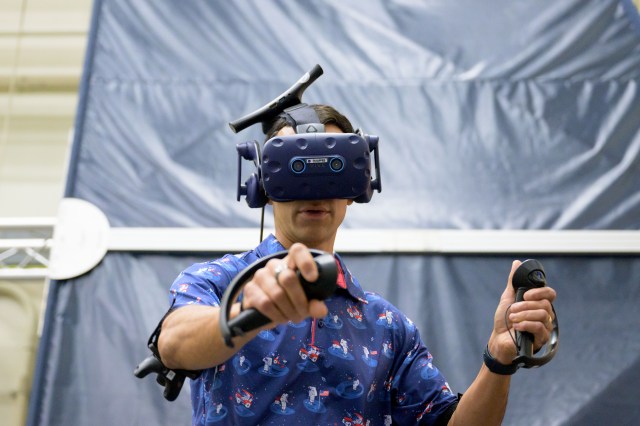
Through Astronaut Eyes, Virtual Reality Propels Gateway Forward

How NASA Spotted El Niño Changing the Saltiness of Coastal Waters
- Search All NASA Missions
- A to Z List of Missions
- Upcoming Launches and Landings
- Spaceships and Rockets
- Communicating with Missions
- James Webb Space Telescope
- Hubble Space Telescope
- Why Go to Space
- Astronauts Home
- Commercial Space
- Destinations
- Living in Space
- Explore Earth Science
- Earth, Our Planet
- Earth Science in Action
- Earth Multimedia
- Earth Science Researchers
- Pluto & Dwarf Planets
- Asteroids, Comets & Meteors
- The Kuiper Belt
- The Oort Cloud
- Skywatching
- The Search for Life in the Universe
- Black Holes
- The Big Bang
- Dark Energy & Dark Matter
- Earth Science
- Planetary Science
- Astrophysics & Space Science
- The Sun & Heliophysics
- Biological & Physical Sciences
- Lunar Science
- Citizen Science
- Astromaterials
- Aeronautics Research
- Human Space Travel Research
- Science in the Air
- NASA Aircraft
- Flight Innovation
- Supersonic Flight
- Air Traffic Solutions
- Green Aviation Tech
- Drones & You
- Technology Transfer & Spinoffs
- Space Travel Technology
- Technology Living in Space
- Manufacturing and Materials
- Science Instruments
- For Kids and Students
- For Educators
- For Colleges and Universities
- For Professionals
- Science for Everyone
- Requests for Exhibits, Artifacts, or Speakers
- STEM Engagement at NASA
- NASA's Impacts
- Centers and Facilities
- Directorates
- Organizations
- People of NASA
- Internships
- Our History
- Doing Business with NASA
- Get Involved
- Aeronáutica
- Ciencias Terrestres
- Sistema Solar
- All NASA News
- Video Series on NASA+
- Newsletters
- Social Media
- Media Resources
- Upcoming Launches & Landings
- Virtual Events
- Sounds and Ringtones
- Interactives
- STEM Multimedia

NASA’s TESS Temporarily Pauses Science Observations
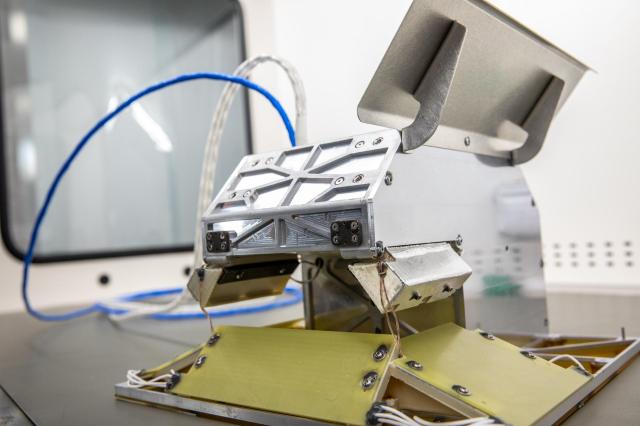
NASA Technology Helps Guard Against Lunar Dust

NASA Shares Medical Expertise with New Space Station Partners

From NASA’s First Astronaut Class to Artemis II: The Importance of Military Jet Pilot Experience
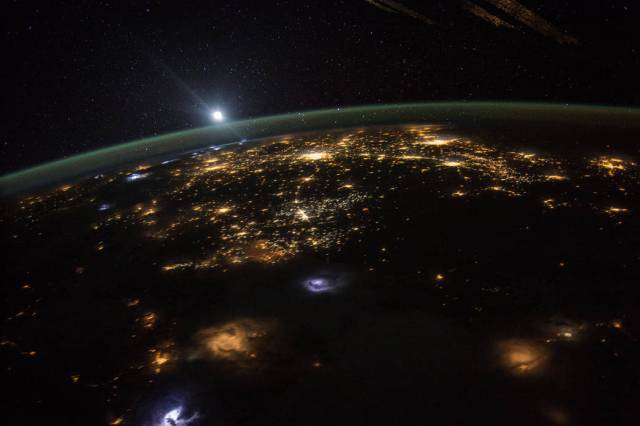
Commercial Space Frequently Asked Questions

NASA’s Lola Fatoyinbo Receives Royal Geographical Society Prize
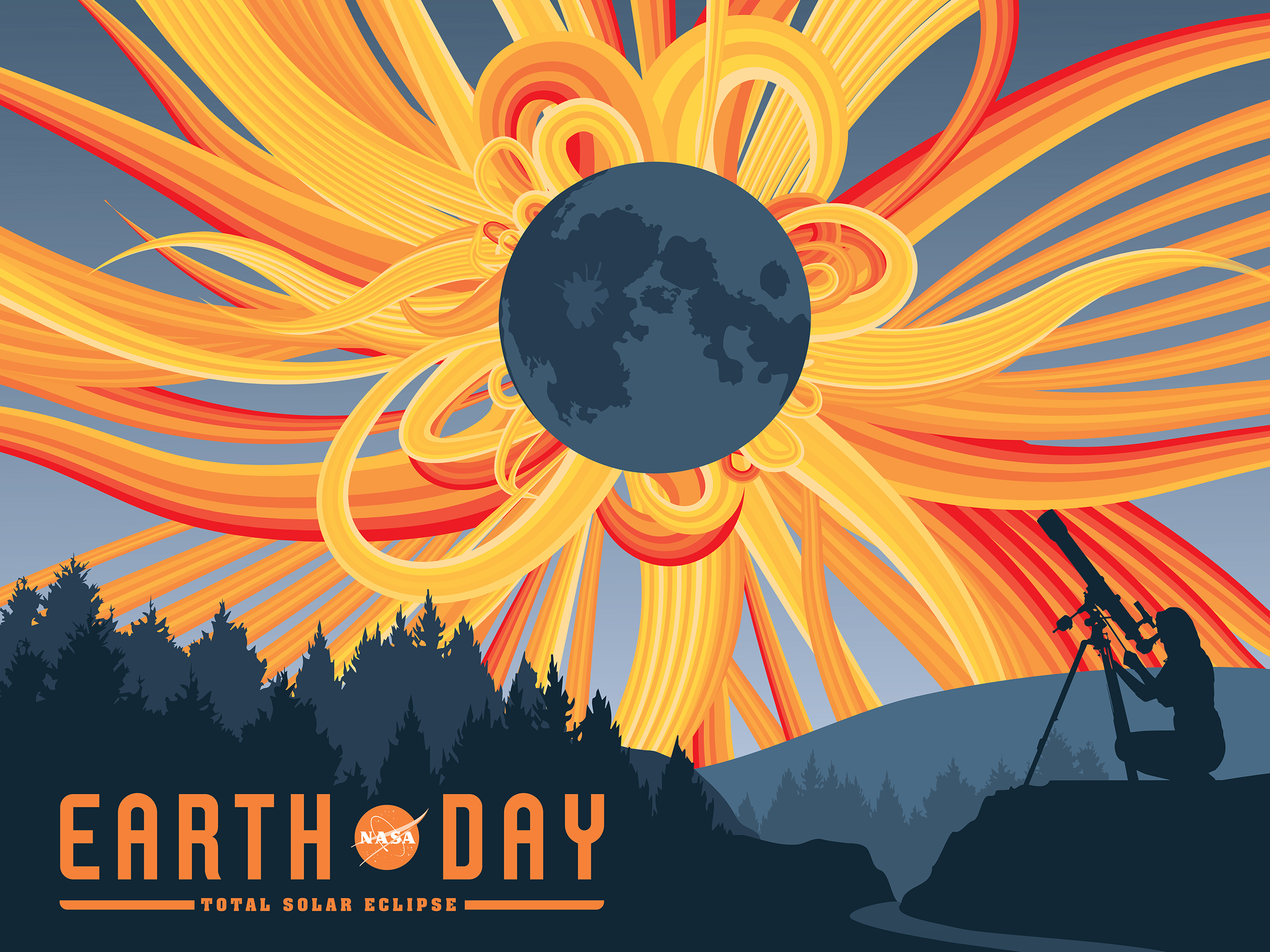
Earth Day Toolkit

More Than 36,000 Volunteers Helped Do NASA Eclipse Science


NASA Names Finalists of the Power to Explore Challenge
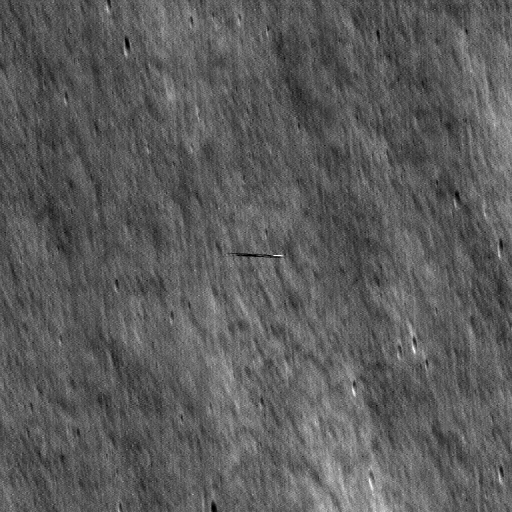
NASA’s LRO Finds Photo Op as It Zips Past SKorea’s Danuri Moon Orbiter
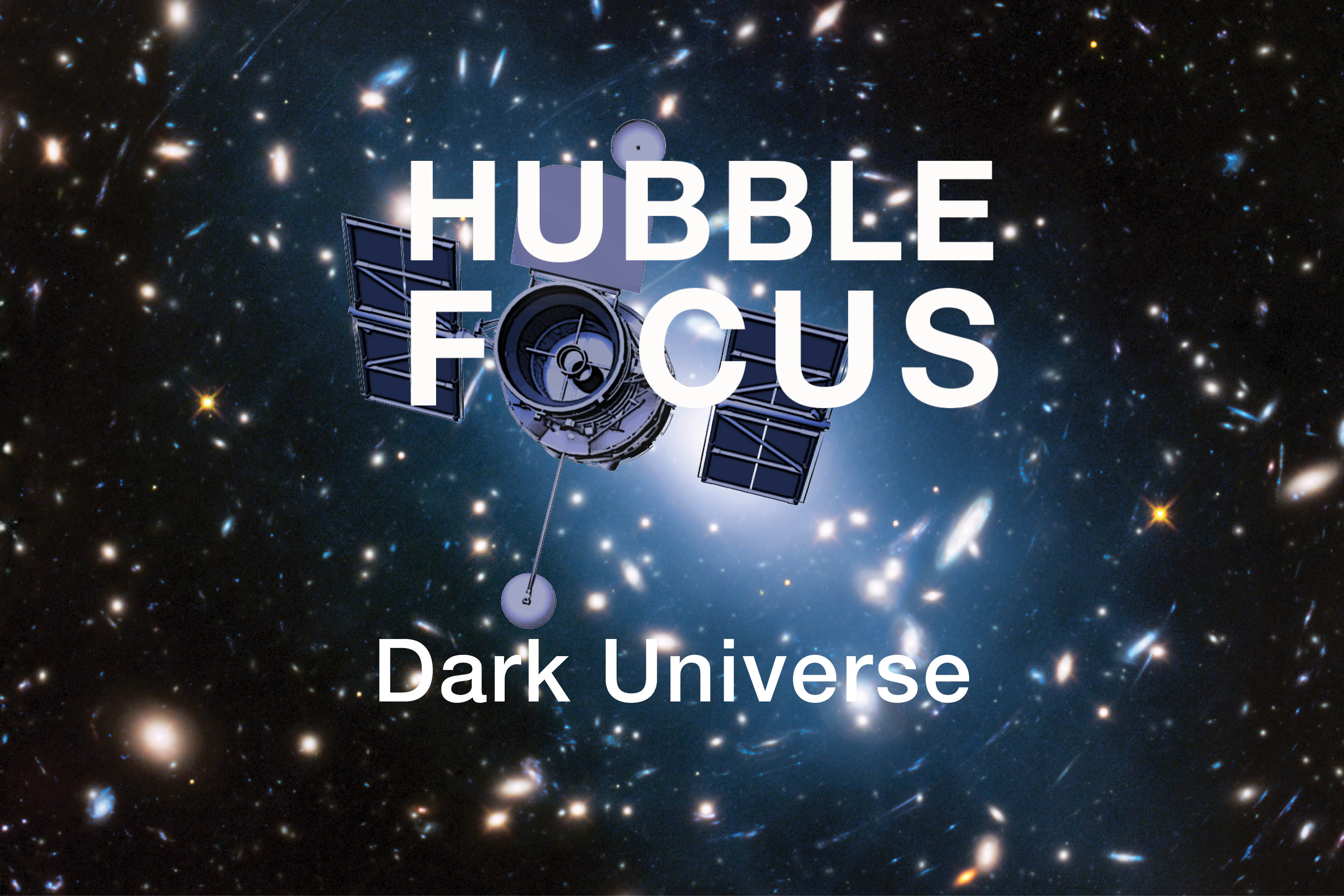
NASA’s New Hubble E-Book Spotlights Universe’s Best-Kept Dark Secrets
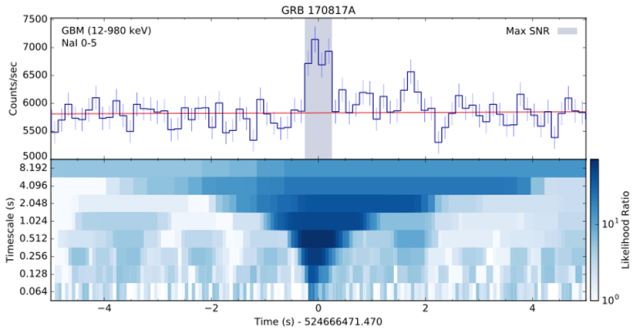
SRPD Gamma-ray Astrophysics

NASA Langley Team to Study Weather During Eclipse Using Uncrewed Vehicles

NASA Noise Prediction Tool Supports Users in Air Taxi Industry

ARMD Solicitations

NASA’s SERT II: ‘A Genuine Space Success Story’

Tech Today: Synthetic DNA Diagnoses COVID, Cancer

NASA Partnerships Bring 2024 Total Solar Eclipse to Everyone

Launch Week Event Details

La presentación del X-59 de la NASA personifica la tradición aeronáutica
30 years ago: voyager 2’s historic neptune flyby.
Anthony Greicius
Getting there, being there.
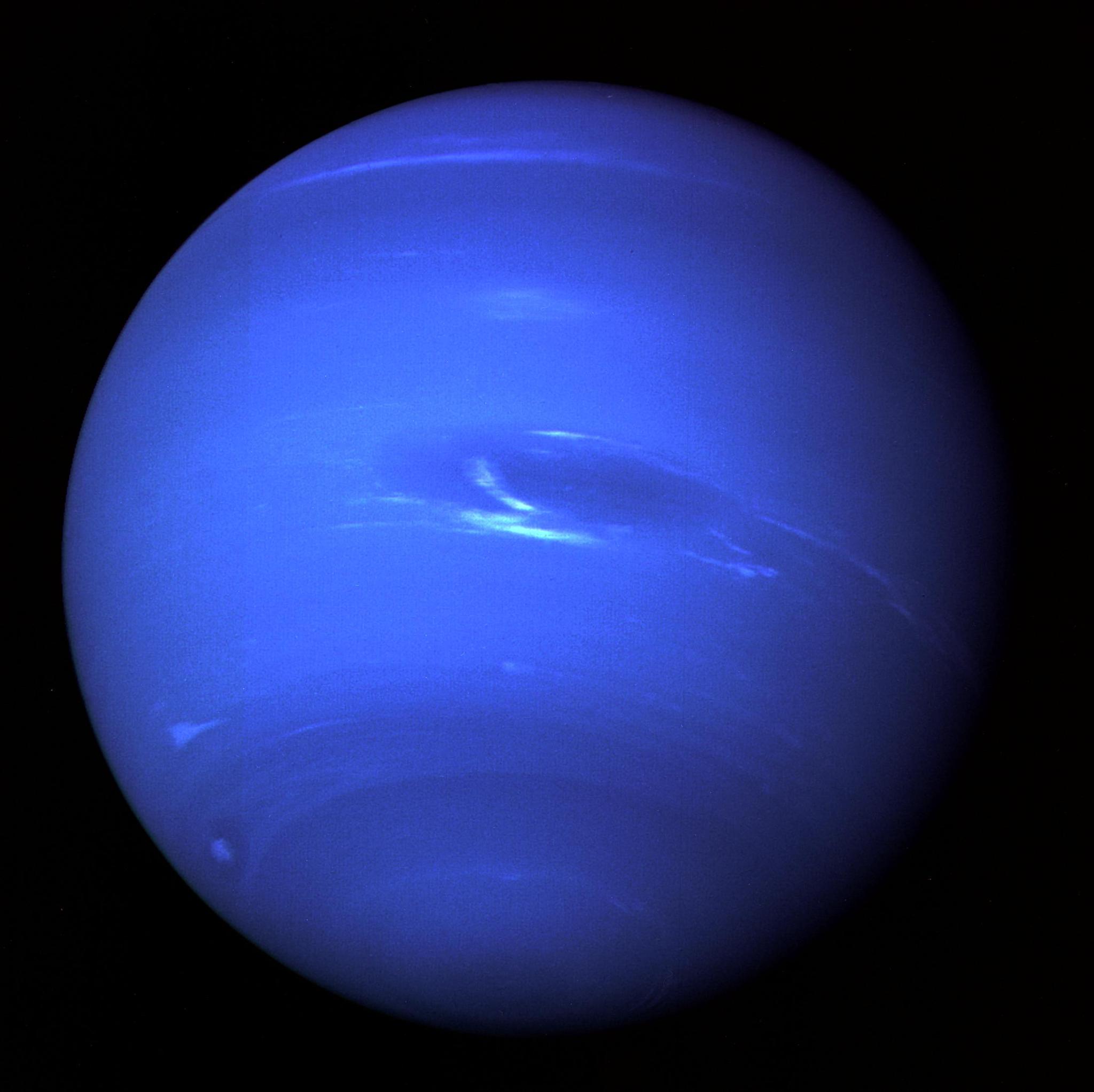
Thirty years ago, on Aug. 25, 1989, NASA’s Voyager 2 spacecraft made a close flyby of Neptune, giving humanity its first close-up of our solar system’s eighth planet. Marking the end of the Voyager mission’s Grand Tour of the solar system’s four giant planets — Jupiter, Saturn, Uranus and Neptune — that first was also a last: No other spacecraft has visited Neptune since.
“The Voyager planetary program really was an opportunity to show the public what science is all about,” said Ed Stone, a professor of physics at Caltech and Voyager’s project scientist since 1975. “Every day we learned something new.”
Wrapped in teal- and cobalt-colored bands of clouds, the planet that Voyager 2 revealed looked like a blue-hued sibling to Jupiter and Saturn, the blue indicating the presence of methane. A massive, slate-colored storm was dubbed the “Great Dark Spot,” similar to Jupiter’s Great Red Spot. Six new moons and four rings were discovered.
During the encounter, the engineering team carefully changed the probe’s direction and speed so that it could do a close flyby of the planet’s largest moon, Triton. The flyby showed evidence of geologically young surfaces and active geysers spewing material skyward. This indicated that Triton was not simply a solid ball of ice, even though it had the lowest surface temperature of any natural body observed by Voyager: minus 391 degrees Fahrenheit (minus 235 degrees Celsius).
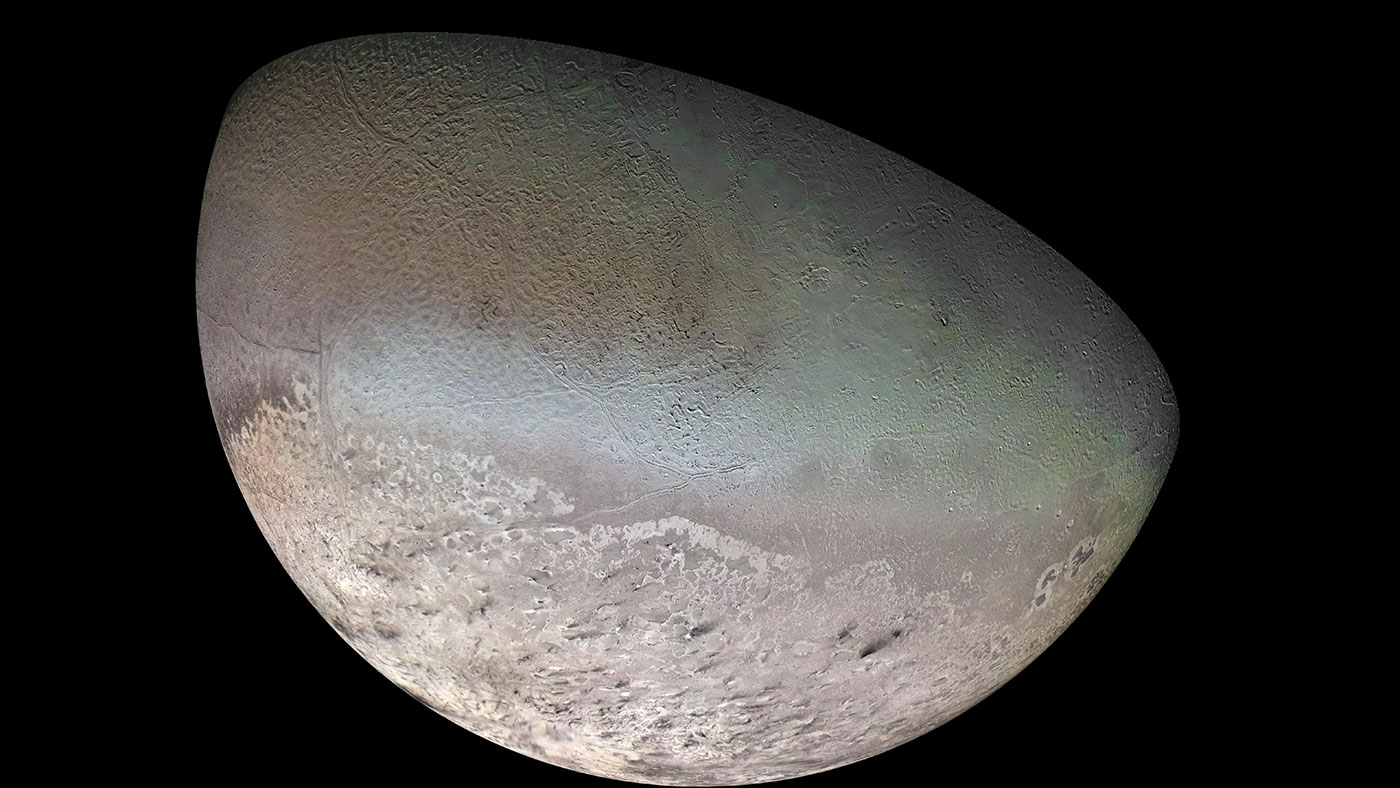
The conclusion of the Neptune flyby marked the beginning of the Voyager Interstellar Mission, which continues today, 42 years after launch. Voyager 2 and its twin, Voyager 1 (which had also flown by Jupiter and Saturn), continue to send back dispatches from the outer reaches of our solar system. At the time of the Neptune encounter, Voyager 2 was about 2.9 billion miles (4.7 billion kilometers) from Earth; today it is 11 billion miles (18 billion kilometers) from us. The faster-moving Voyager 1 is 13 billion miles (21 billion kilometers) from Earth.
By the time Voyager 2 reached Neptune, the Voyager mission team had completed five planetary encounters. But the big blue planet still posed unique challenges.
About 30 times farther from the Sun than Earth is, the icy giant receives only about 0.001 times the amount of sunlight that Earth does. In such low light, Voyager 2’s camera required longer exposures to get quality images. But because the spacecraft would reach a maximum speed of about 60,000 mph (90,000 kph) relative to Earth, a long exposure time would make the image blurry. (Imagine trying to take a picture of a roadside sign from the window of a speeding car.)
So the team programmed Voyager 2’s thrusters to fire gently during the close approach, rotating the spacecraft to keep the camera focused on its target without interrupting the spacecraft’s overall speed and direction.
The probe’s great distance also meant that by the time radio signals from Voyager 2 reached Earth, they were weaker than those of other flybys. But the spacecraft had the advantage of time: The Voyagers communicate with Earth via the Deep Space Network, or DSN, which utilizes radio antennas at sites in Madrid, Spain; Canberra, Australia; and Goldstone, California. During Voyager 2’s Uranus encounter in 1986, the three largest DSN antennas were 64-meters (210 feet) wide. To assist with the Neptune encounter, the DSN expanded the dishes to 70 meters (230 feet). They also included nearby non-DSN antennas to collect data, including another 64-meter (210 feet) dish in Parkes, Australia, and multiple 25-meter (82 feet) antennas at the Very Large Array in New Mexico.
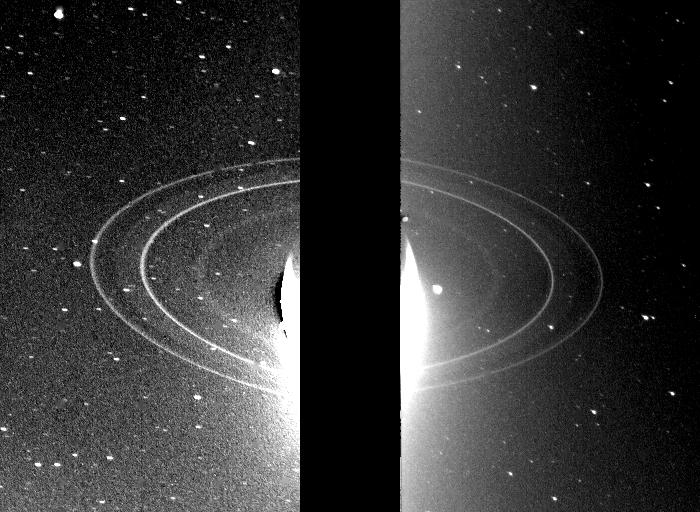
The effort ensured that engineers could hear Voyager loud and clear. It also increased how much data could be sent back to Earth in a given period, enabling the spacecraft to send back more pictures from the flyby.
In the week leading up to that August 1989 close encounter, the atmosphere was electric at NASA’s Jet Propulsion Laboratory in Pasadena, California, which manages the Voyager mission. As images taken by Voyager 2 during its Neptune approach made the four-hour journey to Earth, Voyager team members would crowd around computer monitors around the Lab to see.
“One of the things that made the Voyager planetary encounters different from missions today is that there was no internet that would have allowed the whole team and the whole world to see the pictures at the same time,” Stone said. “The images were available in real time at a limited number of locations.”
But the team was committed to giving the public updates as quickly as possible, so from Aug. 21 to Aug. 29, they would share their discoveries with the world during daily press conferences. On Aug. 24, a program called “Voyager All Night” broadcast regular updates from the probe’s closest encounter with the planet, which took place at 4 a.m. GMT (9 p.m. in California on Aug. 24).
The next morning, Vice President Dan Quayle visited the Lab to commend the Voyager team. That night, Chuck Berry, whose song “Johnny B. Goode” was included on the Golden Record that flew with both Voyagers, played at JPL’s celebration of the feat.
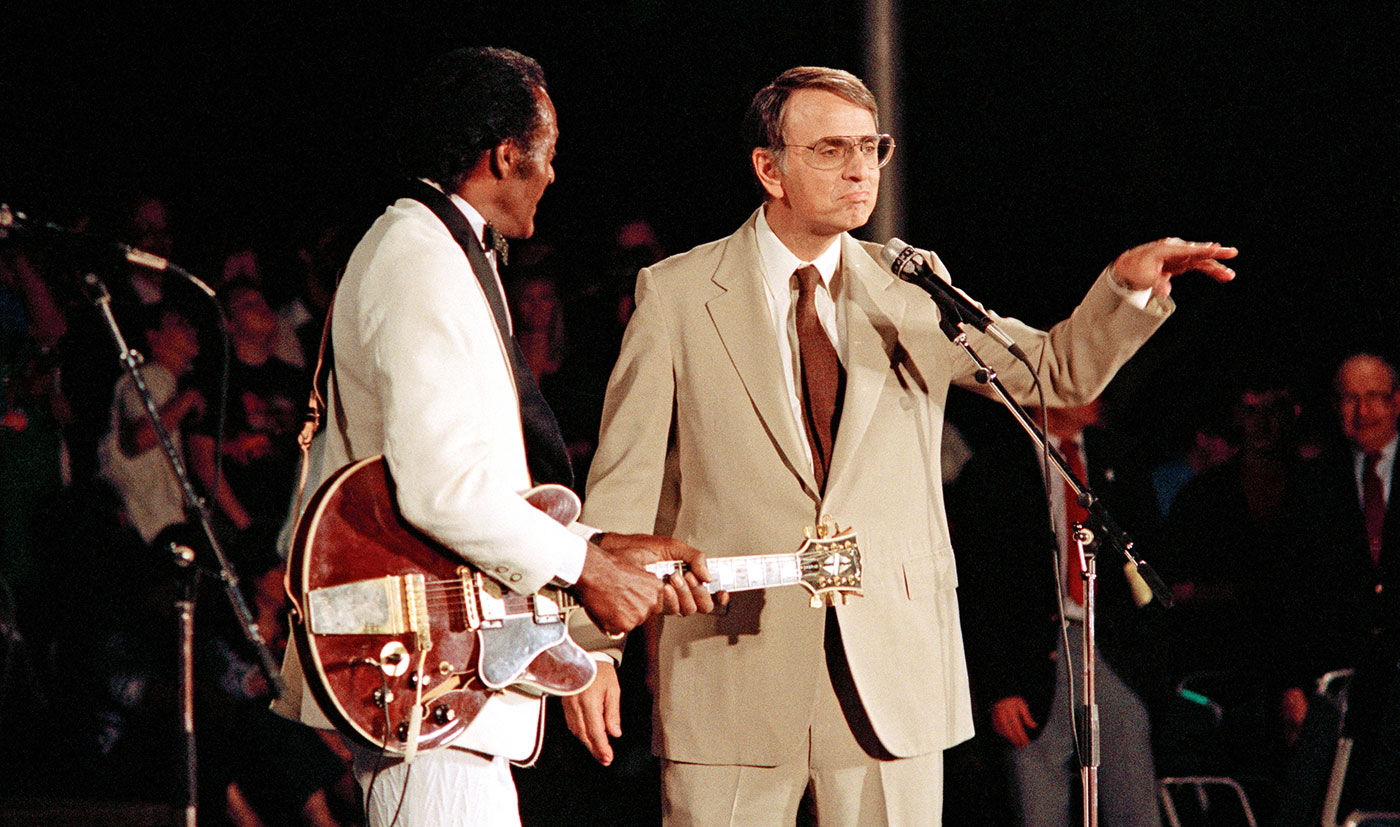
Of course, the Voyagers’ achievements extend far beyond that historic week three decades ago. Both probes have now entered interstellar space after exiting the heliosphere — the protective bubble around the planets created by a high-speed flow of particles and magnetic fields spewed outward by our Sun.
They are reporting back to Earth on the “weather” and conditions from this region filled with the debris from stars that exploded elsewhere in our galaxy. They have taken humanity’s first tenuous step into the cosmic ocean where no other operating probes have flown.
Voyager data also complement other missions, including NASA’s Interstellar Boundary Explorer ( IBEX ), which is remotely sensing that boundary where particles from our Sun collide with material from the rest of the galaxy. And NASA is preparing the Interstellar Mapping and Acceleration Probe ( IMAP ), due to launch in 2024, to capitalize on Voyager observations.
The Voyagers send their findings back to DSN antennas with 13-watt transmitters — about enough power to run a refrigerator light bulb.
“Every day they travel somewhere that human probes have never been before,” said Stone. “Forty-two years after launch, and they’re still exploring.”
For more information about the Voyager mission visit:
https://voyager.jpl.nasa.gov/
For more images of Neptune taken by Voyager 2 visit:
https://voyager.jpl.nasa.gov/galleries/images-voyager-took/neptune/
Calla Cofield Jet Propulsion Laboratory, Pasadena, Calif. 626-808-2469 [email protected]
We finally know why NASA's Voyager 1 spacecraft stopped communicating — scientists are working on a fix
The first spacecraft to explore beyond the solar system started spouting gibberish late last year. Now, NASA knows why.

NASA engineers have discovered the cause of a communications breakdown between Earth and the interstellar explorer Voyager 1. It would appear that a small portion of corrupted memory exists in one of the spacecraft's computers.
The glitch caused Voyager 1 to send unreadable data back to Earth, and is found in the NASA spacecraft's flight data subsystem (FDS). That's the system responsible for packaging the probe's science and engineering data before the telemetry modulation unit (TMU) and radio transmitter send it back to mission control.
The source of the issue began to reveal itself when Voyager 1 operators sent the spacecraft a "poke" on March 3, 2024. This was intended to prompt FDS to send a full memory readout back to Earth.
The readout confirmed to the NASA team that about 3% of the FDS memory had been corrupted, and that this was preventing the computer from carrying out its normal operations.
Related: NASA finds clue while solving Voyager 1's communication breakdown case
Launched in 1977, Voyager 1 became the first human-made object to leave the solar system and enter interstellar space in 2012. Voyager 2 followed its spacecraft sibling out of the solar system in 2018, and is still operational and communicating well with Earth.
After 11 years of interstellar exploration, in Nov. 2023, Voyager 1's binary code — the computer language it uses to communicate with Earth — stopped making sense. Its 0's and 1's didn't mean anything anymore.
Get the Space.com Newsletter
Breaking space news, the latest updates on rocket launches, skywatching events and more!
"Effectively, the call between the spacecraft and the Earth was still connected, but Voyager's 'voice' was replaced with a monotonous dial tone," Voyager 1's engineering team previously told Space.com .

The team strongly suspects this glitch is the result of a single chip that's responsible for storing part of the affected portion of the FDS memory ceasing to work.
Currently, however, NASA can’t say for sure what exactly caused that particular issue. The chip could have been struck by a high-speed energetic particle from space or, after 46 years serving Voyager 1, it may simply have worn out.
— Voyager 2: An iconic spacecraft that's still exploring 45 years on
— NASA's interstellar Voyager probes get software updates beamed from 12 billion miles away
— NASA Voyager 2 spacecraft extends its interstellar science mission for 3 more years
Voyager 1 currently sits around 15 billion miles (24 billion kilometers) from Earth, which means it takes 22.5 hours to receive a radio signal from it — and another 22.5 hours for the spacecraft to receive a response via the Deep Space Network's antennas. Solving this communication issue is thus no mean feat.
Yet, NASA scientists and engineers are optimistic they can find a way to help FDS operate normally, even without the unusable memory hardware.
Solving this issue could take weeks or even months, according to NASA — but if it is resolved, Voyager 1 should be able to resume returning science data about what lies outside the solar system.
Join our Space Forums to keep talking space on the latest missions, night sky and more! And if you have a news tip, correction or comment, let us know at: [email protected].

Robert Lea is a science journalist in the U.K. whose articles have been published in Physics World, New Scientist, Astronomy Magazine, All About Space, Newsweek and ZME Science. He also writes about science communication for Elsevier and the European Journal of Physics. Rob holds a bachelor of science degree in physics and astronomy from the U.K.’s Open University. Follow him on Twitter @sciencef1rst.
SpaceX launches advanced weather satellite for US Space Force (video)
SpaceX launches 23 Starlink satellites in nighttime liftoff (photos, video)
'Star Wars: Tales of the Empire' sets surprise May the 4th debut on Disney Plus (video)
Most Popular
By Joe Rao April 10, 2024
By Robert Lea April 10, 2024
By Mike Wall April 10, 2024
By Brett Tingley April 10, 2024
By Jamie Carter April 10, 2024
By Jeff Spry April 10, 2024
By Robert Z. Pearlman April 10, 2024
By Harry Baker April 10, 2024
By Daisy Dobrijevic April 10, 2024
- 2 Trains, planes and a total solar eclipse! Watching the moon block the sun was a transportation adventure (exclusive)
- 3 Soviet-era cosmonaut Vladimir Aksyonov, who flew into space twice, dies at 89
- 4 Space weather can make it hard to predict satellite trajectories. Here's why that's a problem
- 5 Stars make a bigger mess in old galaxies, and scientists just figured out why
NASA engineers discover why Voyager 1 is sending a stream of gibberish from outside our solar system
Voyager 1 has been sending a stream of garbled nonsense since November. Now NASA engineers have identified the fault and found a potential workaround.
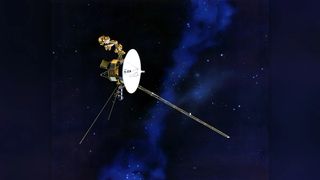
For the past five months, the Voyager 1 spacecraft has been sending a steady stream of unreadable gibberish back to Earth. Now, NASA engineers finally know why.
The 46-year-old spacecraft sends regular radio signals as it drifts further from our solar system . But in November 2023, the signals suddenly became garbled, meaning scientists were unable to read any of its data, and they were left mystified about the fault's origins.
In March, NASA engineers sent a command prompt, or "poke," to the craft to get a readout from its flight data subsystem (FDS) — which packages Voyager 1's science and engineering data before beaming it back to Earth.
After decoding the spacecraft's response, the engineers have found the source of the problem: The FDS's memory has been corrupted.
Related: NASA's Voyager 1 sends readable message to Earth after 4 nail-biting months of gibberish
"The team suspects that a single chip responsible for storing part of the affected portion of the FDS memory isn't working," NASA said in a blog post Wednesday (March 13) . "Engineers can't determine with certainty what caused the issue. Two possibilities are that the chip could have been hit by an energetic particle from space or that it simply may have worn out after 46 years."
— NASA hears 'heartbeat' signal from Voyager 2 probe a week after losing contact
— Historic space photo of the week: Voyager 2 spies a storm on Saturn 42 years ago
— NASA reestablishes full contact with Voyager 2 probe after nail-biting 2-week blackout
Although it may take several months, the engineers say they can find a workaround to run the FDS without the fried chip — restoring the spacecraft's messaging output and enabling it to continue to send readable information from outside our solar system.
Sign up for the Live Science daily newsletter now
Get the world’s most fascinating discoveries delivered straight to your inbox.
Launched in 1977, Voyager 1 zipped past Saturn and Jupiter in 1979 and 1980 before flying out into interstellar space in 2012. It is now recording the conditions outside of the sun's protective magnetic field , or heliosphere, which blankets our solar system.
Voyager 1 is currently more than 15 billion miles (24 billion kilometers) from Earth, and it takes 22.5 hours for any radio signal to travel from the craft to our planet.

Ben Turner is a U.K. based staff writer at Live Science. He covers physics and astronomy, among other topics like tech and climate change. He graduated from University College London with a degree in particle physics before training as a journalist. When he's not writing, Ben enjoys reading literature, playing the guitar and embarrassing himself with chess.
NASA spacecraft snaps mysterious 'surfboard' orbiting the moon. What is it?
The moon is getting its own time zone, White House memo to NASA reveals
Why I watched the solar eclipse with my kids, a goose and 2,000 trees
- TorbjornLarsson Bon voyage, Voyager! Reply
- Jay McHue What if aliens are doing it to try to communicate with us? 🤪 Reply
Jay McHue said: What if aliens are doing it to try to communicate with us? 🤪
admin said: Voyager 1 has been sending a stream of garbled nonsense since November. Now NASA engineers have identified the fault and found a potential workaround. NASA engineers discover why Voyager 1 is sending a stream of gibberish from outside our solar system : Read more
sourloaf said: What does FSB mean?
Rusty Lugnuts said: Where are you seeing "FSB"? The closest thing I can see in the article is "FDS". In modern computers, FSB would most likely refer to the Fr0nt S1ide Bu5, though I have no idea if a system as old as Voyagers, let alone engineered so specifically, would have an FSB. (apparently I can't spell out "Fr0nt S1ide Bu5" or my post gets flagged as spam or inappropriate??)
- SkidWard Just cut the % of ram needed... skip the bad sectors Reply
- kloudykat FDS = fl1ght da1a sub5ystem5 Reply
- 5ft24dave This is pretty old news, like 6 months old. Are you guys just now discovering this? Reply
Commodore Browncoat said: That's about as sane a theory as many of the others that have become ridiculously popular in the past several years, so sure - why not? What reply do you think we should send?
- View All 11 Comments
Most Popular
By Peter Ray Allison April 10, 2024
By Tom Metcalfe April 09, 2024
By Rebecca Sohn April 09, 2024
By Stephanie Pappas April 09, 2024
By Samantha Mathewson April 09, 2024
By Nicoletta Lanese April 09, 2024
By Sascha Pare April 09, 2024
By Emily Cooke April 09, 2024
By Harry Baker April 09, 2024
- 2 Here are the best photos of the April 8 total solar eclipse over North America
- 3 Part of the San Andreas fault may be gearing up for an earthquake
- 4 Pet fox with 'deep relationship with the hunter-gatherer society' buried 1,500 years ago in Argentina
- 5 NASA engineers discover why Voyager 1 is sending a stream of gibberish from outside our solar system
- 2 Pet fox with 'deep relationship with the hunter-gatherer society' buried 1,500 years ago in Argentina
- 3 No, you didn't see a solar flare during the total eclipse — but you may have seen something just as special
- 4 Neolithic women in Europe were tied up and buried alive in ritual sacrifices, study suggests
- 5 Superfast drone fitted with new 'rotating detonation rocket engine' approaches the speed of sound

IMAGES
VIDEO
COMMENTS
Three days before its closest approach to Saturn, Voyager 2 imaged the two-toned moon Iapetus from 565,000 miles away, and two days later it photographed the moon Hyperion from 310,000 miles. Eighteen hours before closest approach, it passed within 413,000 miles of Saturn's largest satellite Titan and returned images of its orange cloud cover
When Voyager 2 passed behind Saturn, viewed from Earth, it utilized its radio link to investigate Saturn's upper atmosphere, ... Voyager 2 discovered two previously unknown Uranian rings. Measurements showed that the Uranian rings are different from those at Jupiter and Saturn. The Uranian ring system might be relatively young, and it did not ...
Voyager 2 made its closest approach to Saturn 40 years ago - on Aug. 25, 1981. What the Voyagers revealed at the planet was so phenomenal that, just one year later, a joint American and European working group began discussing a mission that would carry on the legacy of the Voyagers at Saturn. That mission - Cassini - studied the Saturn ...
What Voyager 2 discovered around Saturn — When Spilker graduated with a bachelor's degree in physics and went to work for NASA in 1977, they gave her a choice of missions., including a brand ...
published 25 August 2016. NASA's Voyager 2 spacecraft captured this view of Saturn on Aug. 11, 1981, two weeks before its closest approach to the ringed planet.(Image credit: NASA/JPL-Caltech ...
Voyager 2 became the third spacecraft to visit Saturn when it arrived at its closest point to the ringed planet on Aug. 26, 1981, and took hundreds of pictures of the planet, its moons and its ...
Voyager 2 made its closest approach to Saturn 35 years ago -- on Aug. 25, 1981. What the Voyagers revealed at the planet was so phenomenal that, just one year later, a joint American and European working group began discussing a mission that would carry on Voyager's legacy at Saturn. That mission -- named Cassini -- has been studying the Saturn ...
Voyager 2 took this image of Saturn on Aug. 11, 1981, when the spacecraft was 9.1 million miles from Earth. ... Fortified 14th-century castle and moat discovered under hotel in France.
Voyager 2 further measured Uranus' radiation belts, which were found to have a similar intensity as those of Saturn. Voyager 2 also discovered 10 new moons of Uranus, and Miranda was revealed to ...
Voyager 2 made its closest approach to Saturn 35 years ago -- on Aug. 25, 1981. What the Voyagers revealed at the planet was so phenomenal that, just one year later, a joint American and European working group began discussing a mission that would carry on Voyager's legacy at Saturn. ... Voyager discovered four new moons and sharpened our view ...
Credits: NASA/JPL-Caltech. Thirty years ago, on Aug. 25, 1989, NASA's Voyager 2 spacecraft made a close flyby of Neptune, giving humanity its first close-up of our solar system's eighth planet. Marking the end of the Voyager mission's Grand Tour of the solar system's four giant planets — Jupiter, Saturn, Uranus and Neptune — that ...
Voyager 1 currently sits around 15 billion miles (24 billion kilometers) from Earth, which means it takes 22.5 hours to receive a radio signal from it — and another 22.5 hours for the spacecraft ...
Launched in 1977, Voyager 1 zipped past Saturn and Jupiter in 1979 and 1980 before flying out into interstellar space in 2012. It is now recording the conditions outside of the sun's protective ...
40 Years Ago: Voyager 2 Explores Saturn. 6 min read. Forty years ago, the Voyager 2 spacecraft made its closest approach to Saturn. Managed by NASA's Jet Propulsion Laboratory in Pasadena, California, the Voyagers are a pair of spacecraft launched in 1977 to explore the outer planets. Initially targeted only….
NASA hasn't fixed Voyager 1 yet, but engineers now know what's vexing the spacecraft. The glitch paused Voyager 1's science work and kicked off a long-distance diagnosis process. The team ...
Saturn Taken from Voyager 2. December 5, 1998. Credit. NASA/JPL. PIA Number. PIA01364. Language. english. This Voyager 2 image of Saturn was acquired on Aug. 4, 1981, from a distance of 21 million kilometers (13 million miles).